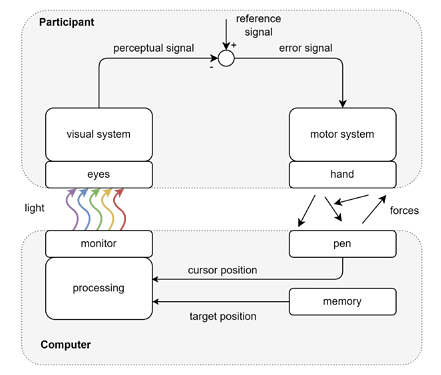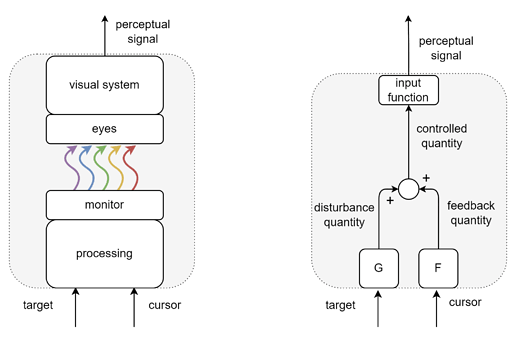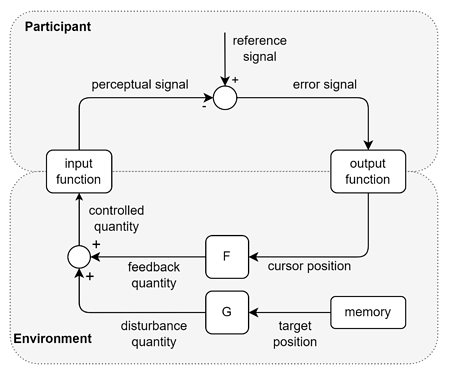Epistemology, or the theory of the origin and limits of knowledge, comes up quite often on CSGnet, and it looks like there are many different opinions. I’ve found that expressing the variables ans functions in mathematical formulas and equivalent diagrams tends to clear up things for me. Another super valuable trick is from physics - always using the units of variables, and specifying what kind of transformations of units any of the functions is doing. Very, very helpful.
From the thread about diagrams:
I think there is a vagueness here - whos perception are we taking about? And which reality? I think there is only one perceptual experience we can talk about, our own. In that sense, “everything is perception”, and we don’t have any direct knowledge of the reality outside of us, assuming it exists. So, if we cannot measure a variable from outside reality, then we cannot say anything about the correlation between a known, measured perceptual variable and an unknown variable from reality. Correlation being a specific mathematical procedure, like Pearson’s coefficient. We can’t know any sort of dependence if we can’t measure one of the variables.
On the other hand, if we are talking about a perceptual signal, measured in some neural units, and some environmental variable, like a position of an object in meters, then we are necessarily talking about a our own experience as researchers or observers of another control system. We are not talking about some outside reality, but in this case we can certainly find correlations between an environmental and a perceptual variable.
(diagram from Feedback, Beyond Behaviorism; Powers, 1973)
Here is an attempt to put some “reality” into the diagram of a tracking task.
This is a diagram of a model of a feedback loop. The model describes the measurable cursor position (numerical value in pixels), the target position (also pixels) stored in computer memory, and postulates the existence of three neural quantities, the perceptual, reference and error signals, measured in some neural units, maybe rates of firing, population codes or something along those lines, somewhere in the brain of the participant, maybe in the visual system.
The diagram says nothing about the mind of the participant or about his experience. We can assume that the participant has the same visual experience as we do, since we are both human, have similar brains, etc, but there is not need for that assumption. We could also hypothesize that a thermostat has the experience of hot and cold, as we do. But I don’t see any way of proving that the thermostat or our participant has experience, so why bother?
Two things that maybe look like “reality” are the light waves going between the monitor and the eyes of the participant. The visual system creates the perceptual signal from raw light waves. For the visual system, there are is nothing outside but light waves. They are placed in a somewhat arbitrary position. There are also light waves inside the eyes, around the hand the pen, inside the computer. There are forces of different kinds all around the body and the computer too .I’ve put them there to emphasize that on the interfaces between the person and environment, in this case, there are only raw light waves and raw forces, and those are not “outside reality”, they are models we use to explain our observations of colors and movements.
That diagram does not have a controlled variable.
Here is how to get it:
By replacing the system on the left that is taking as input the cursor and target positions with an equivalent system on the right.
We can also replace the error signal to cursor system with an equivalent output function:
The controlled variable is not in the “outside reality”. It is not “in the perception of the participant”. It is a part of the observer’s model of the feedback loop, in the environment part, and can be measured or calculated by finding qc = G(target) + F(cursor). The input function is merely transforming the controlled quantity into the perceptual quantity, just a unit converter, with maybe a delay.
We can say that the variables of cursor and target position are reliably present in the environment, but this is just the environment part of the model designed by the observer, they are his experience. There is no outside reality here.



